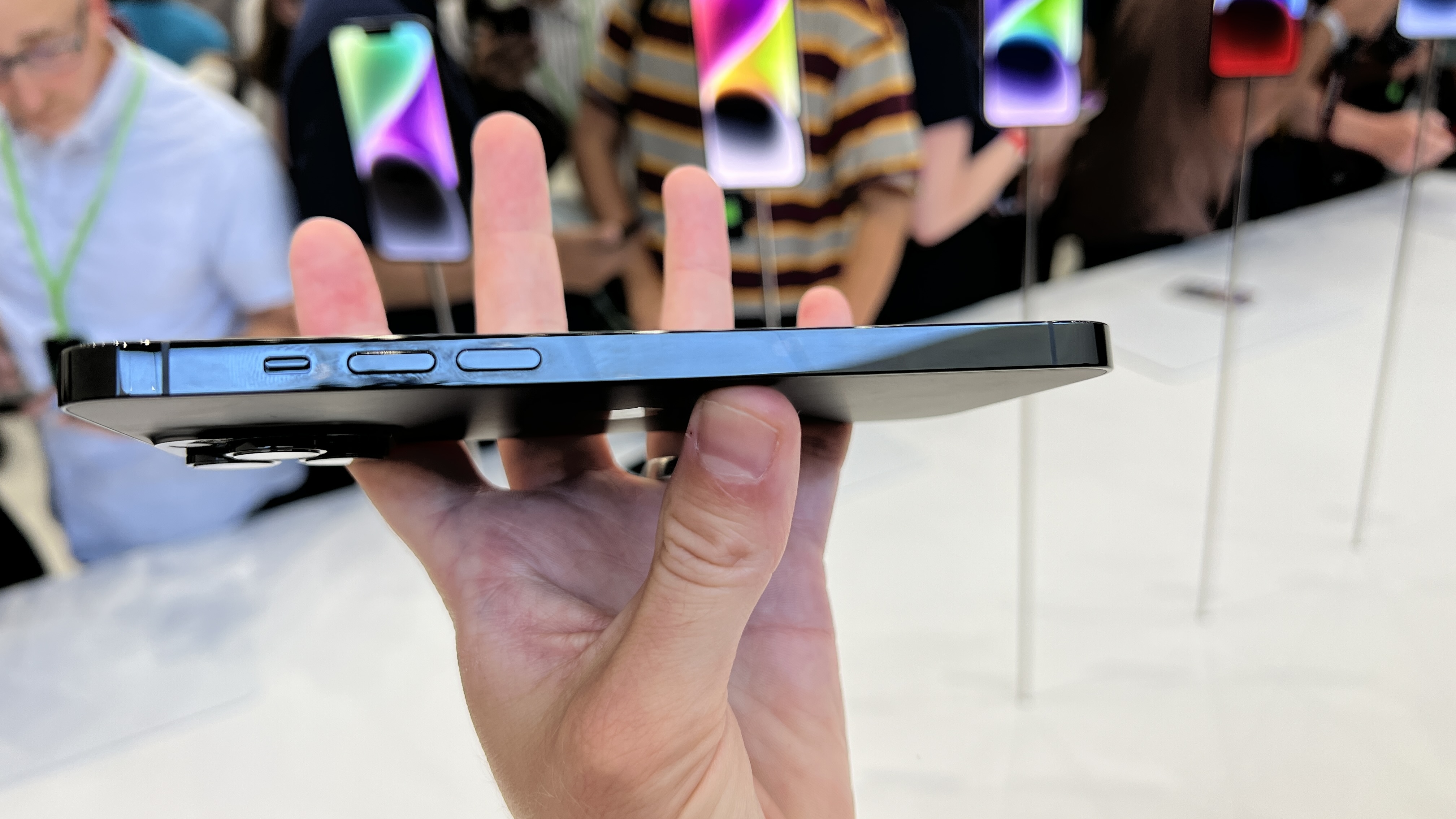Does Apple's bold iPhone 14 eSIM move mean the end of SIM cards?
Good riddance to tiny rubbish

Sometimes Apple devices make more of an impact for what they lack than what they actually contain – and the newly announced Apple iPhone 14 is no exception.
The first Apple iMac was notable because it had no variety of serial ports like other PCs; it only used USB. Even though Apple wasn’t the biggest PC maker, this still drove adoption of USB on a large scale.
Years later, Apple would drop the headphone jack from its iPhone 7. While it was a contentious move, it's without question that wireless headphones have since become cheaper and more ubiquitous in response.
With the Apple iPhone 14, the company will stop offering a SIM card tray on its phones sold in the US, and will rely entirely on eSIM. Every major US carrier – T-Mobile, Verizon, and AT&T – all offer the option to use eSIM technology. eSIM is a software solution that lets you connect your phone to a network without a physical SIM to act as a key.
If you want to use an eSIM, your carrier supplies you with a QR code to scan with a phone, connected to Wi-Fi, and it downloads the eSIM. Recently T-Mobile has tried to circumvent the QR code by offering an eSIM switch through an app on the Apple App Store.
This is a huge move, and it makes sense for Apple on many levels. First of all, by removing the SIM tray Apple makes the phone even more seamless and aesthetically pleasing – a perfectly unbroken surface has long seemed the goal of Apple’s design team. The same was true when Apple removed the headphone jack, and it’s not hard to imagine a future iPhone that uses only wireless charging, thus eliminating even the Lightning port.
Second, and more importantly, this breaks one more hold that the wireless network carriers held over Apple. Apple could sell its phones however it liked, but it needed a little piece of plastic from the wireless carriers to make it work. When you bought a new phone at the Apple store, the representative needed to open the box and then the brand-new phone, install the card, and make sure it all worked properly.
Analysis: An eSIM feels more like Apple than a SIM card
The SIM card was always a terribly inelegant solution, and decidedly un-Apple. With an eSIM card instead, Apple doesn't need to open any boxes. Apple doesn't need to install a card, or rely on the wireless carrier. The SIM card is now a QR code printed on a card, or possibly even an app on the App Store.
Sign up for breaking news, reviews, opinion, top tech deals, and more.
Because there's no need for a SIM card, a user could possibly complete the entire iPhone setup process without a carrier account loaded, then download the appropriate app to install the eSIM card for the carrier of their choice. You used to have to declare which carrier you were using when you purchased the phone; now, instead of being a primary, controlling factor in choosing your iPhone model, the carrier becomes an afterthought.
Whether this will change the industry remains to be seen. The iPhone now controls more than half of the US phone market, according to a report cited by our friends at iMore. With iPhone controlling such a huge share of the existing market, we can assume that many new phones, maybe even a majority, will not need a SIM card. Samsung already supports eSIM in its flagship Galaxy S22, and it won’t be long before carriers see SIM cards as a liability and a distraction, and will start to insist on eSIM from every manufacturer.

Starting more than 20 years ago at eTown.com. Philip Berne has written for Engadget, The Verge, PC Mag, Digital Trends, Slashgear, TechRadar, AndroidCentral, and was Editor-in-Chief of the sadly-defunct infoSync. Phil holds an entirely useful M.A. in Cultural Theory from Carnegie Mellon University. He sang in numerous college a cappella groups.
Phil did a stint at Samsung Mobile, leading reviews for the PR team and writing crisis communications until he left in 2017. He worked at an Apple Store near Boston, MA, at the height of iPod popularity. Phil is certified in Google AI Essentials. His passion is the democratizing power of mobile technology. Before AI came along he was totally sure the next big thing would be something we wear on our faces.